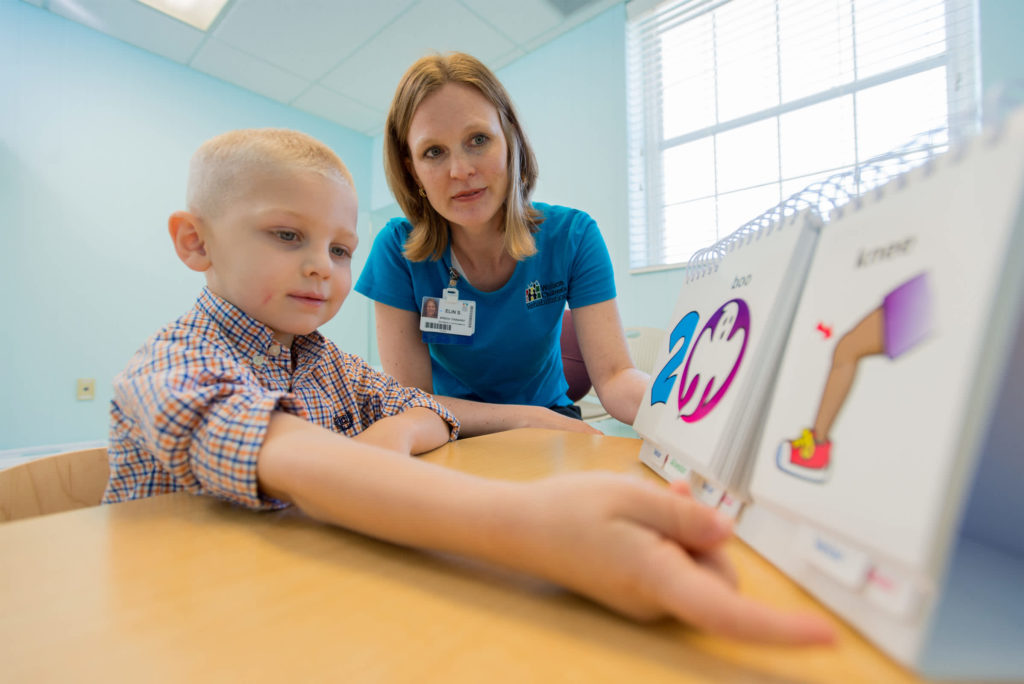
I recently had a conversation with a caseworker regarding individuals who are non-verbal. I asked her if any of the clients in the program receive speech and language services and she responded “Why would someone who is nonverbal need speech and language therapy? They can’t talk!” I explained to her what augmentative and alternative communication is and how important speech and language therapy can be for someone who is nonverbal.
From my perspective as a speech language pathologist, it is crucial that someone who is limited with communication receive ongoing speech and language therapy so that they can learn to communicate their daily and basic needs and wants to others in their environment. If they can communicate independently, there still needs to be intermittent services for other various reasons (e.g. programming, creating backup methods, etc.).
I am writing this article to help reach out to those people who are unclear why someone might need speech and language therapy when a child or adult can’t use speech for functional communication. This article is also written for parents, caregivers and educators that need help justifying why a child who has no functional speech needs speech and language therapy.
When you can’t use speech for communication, you are very limited! A person without a voice is limited in their ability to make choices, interact socially, communicate basic needs and wants and most importantly can be closed off from the world in many ways.
1. Speech and Language Therapy can give a child a way to communicate
As a speech language pathologists, we have a duty to provide those without a voice, a way to communicate through unaided and/or aided communication (e.g. no tech communication books, low and mid tech communication devices, high tech communication devices and/or communication apps).
2. Speech Therapy is also about the language
Speech and language therapy is not just about speech; it also includes language. Many people have a misperception that speech therapy is just about the speech but it is so much more than that. For example, with my clients I target specific concepts such as comprehension, sequencing, actions, pronoun usage, categorization, grammar, etc.
3. Speech and Language helps with social skills
Appropriate pragmatic/social skills are a key component to interacting with others in their community and life. When you have limited, or have no functional speech, pragmatic language skills are often significantly delayed and disordered. Social skills can be targeted with the use of video modeling, role playing, specific therapy apps, social stories and other various strategies and tools. The use of aided communication with these strategies to work on improving these social skills is important.
4. Speech and Language helps with reading
Reading and literacy skills can significantly aid in communication. When you can spell, you can communicate freely. Teaching these essential skills can be the key to better communication with others.
5. Enhances alternative communication methods
Work on other communication strategies to aid communication such as gestures, sign language, approximations, vocalizations, and/or other means of communication.
As humans, we communicate with a total communication approach. We communicate via speech, facial expressions, gestures, eye contact, writing, typing and many other forms of communication. As a speech language pathologist, I often teach my clients how to communicate in other ways in addition to a formal means of aided communication (e.g. use the sign for “bathroom”, “eat” and “drink”, tap on a person’s shoulder to get their attention, etc).
Also, if a child has specific sounds that are being used consistently, make them meaningful. For example, if a child can say “ha,” use that for “help”. For the approximation, “ba” you might use that for “book” if that is important to that specific individual.
I hope you find these tips helpful.
Source

